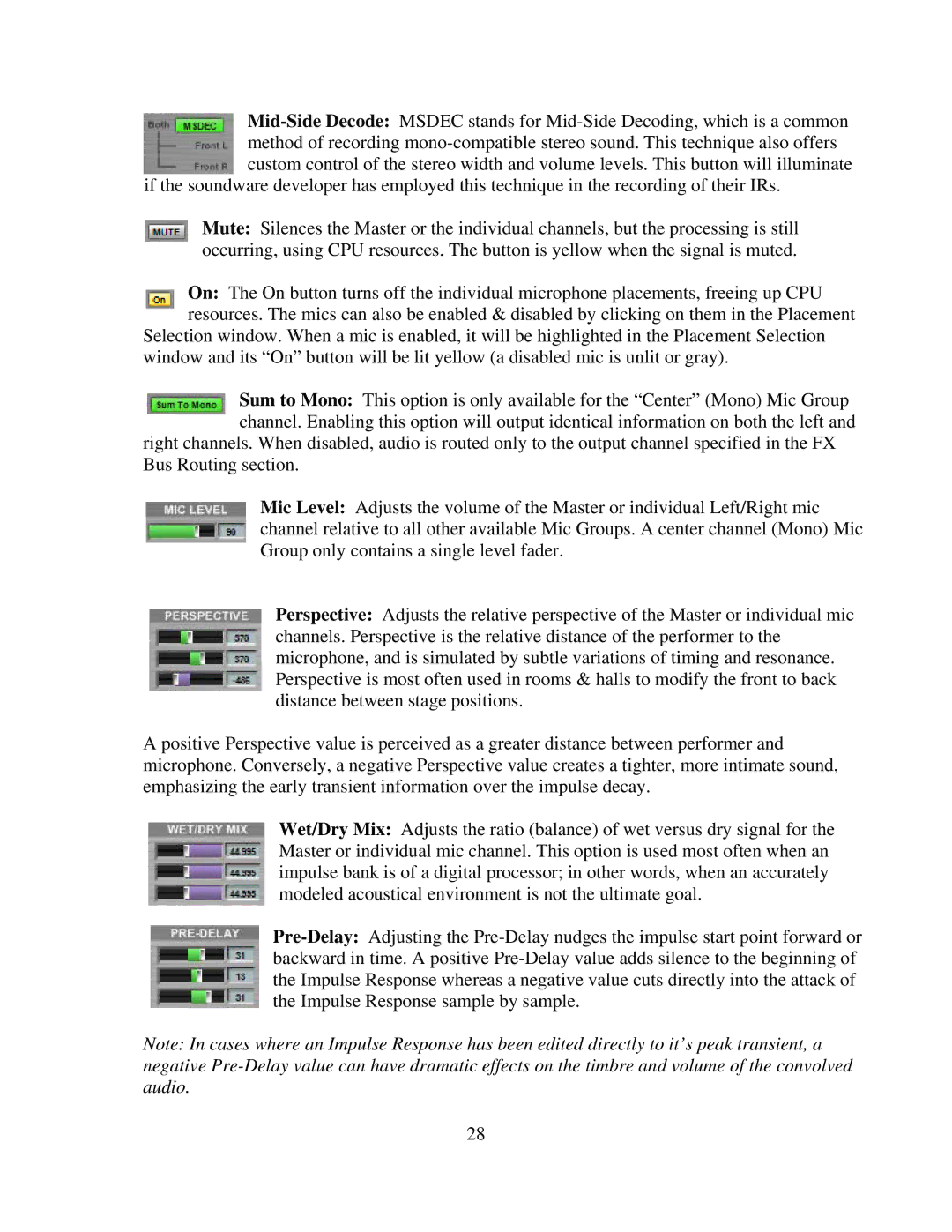
if the soundware developer has employed this technique in the recording of their IRs.
Mute: Silences the Master or the individual channels, but the processing is still occurring, using CPU resources. The button is yellow when the signal is muted.
On: The On button turns off the individual microphone placements, freeing up CPU resources. The mics can also be enabled & disabled by clicking on them in the Placement
Selection window. When a mic is enabled, it will be highlighted in the Placement Selection window and its “On” button will be lit yellow (a disabled mic is unlit or gray).
Sum to Mono: This option is only available for the “Center” (Mono) Mic Group channel. Enabling this option will output identical information on both the left and
right channels. When disabled, audio is routed only to the output channel specified in the FX Bus Routing section.
Mic Level: Adjusts the volume of the Master or individual Left/Right mic channel relative to all other available Mic Groups. A center channel (Mono) Mic Group only contains a single level fader.
Perspective: Adjusts the relative perspective of the Master or individual mic channels. Perspective is the relative distance of the performer to the microphone, and is simulated by subtle variations of timing and resonance. Perspective is most often used in rooms & halls to modify the front to back distance between stage positions.
A positive Perspective value is perceived as a greater distance between performer and microphone. Conversely, a negative Perspective value creates a tighter, more intimate sound, emphasizing the early transient information over the impulse decay.
Wet/Dry Mix: Adjusts the ratio (balance) of wet versus dry signal for the Master or individual mic channel. This option is used most often when an impulse bank is of a digital processor; in other words, when an accurately modeled acoustical environment is not the ultimate goal.
Note: In cases where an Impulse Response has been edited directly to it’s peak transient, a negative
28
